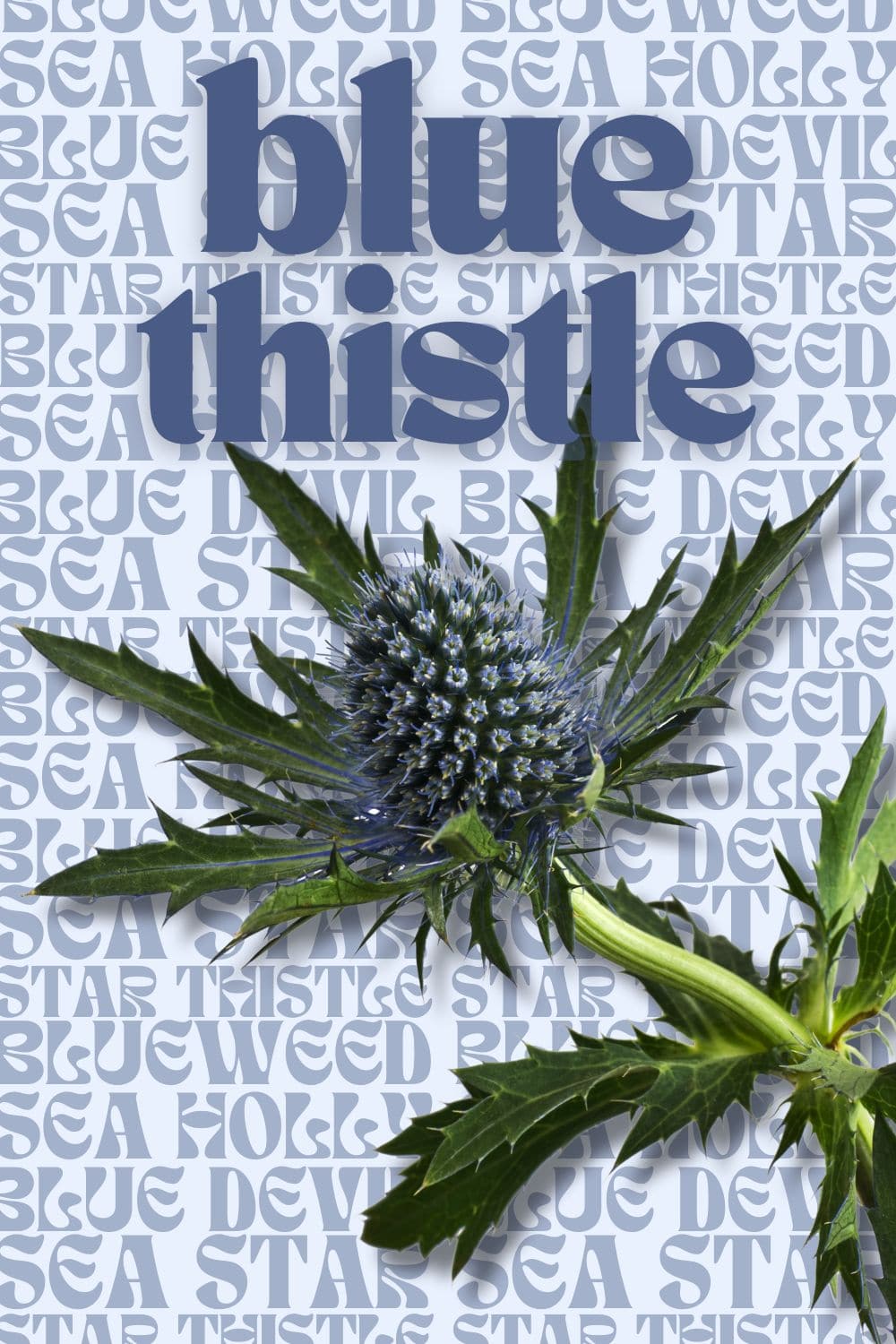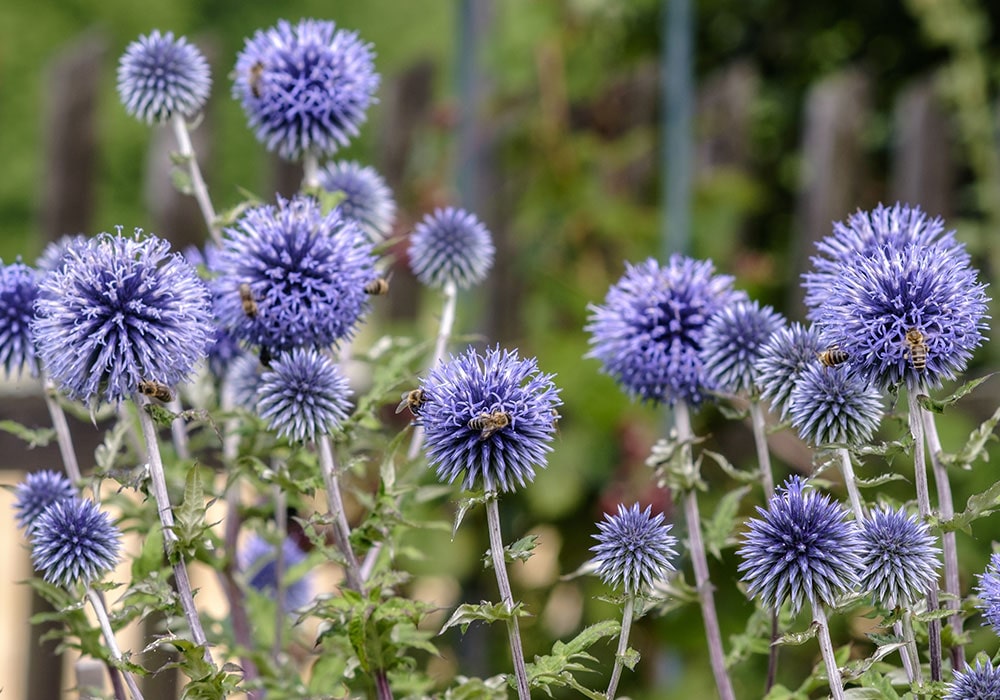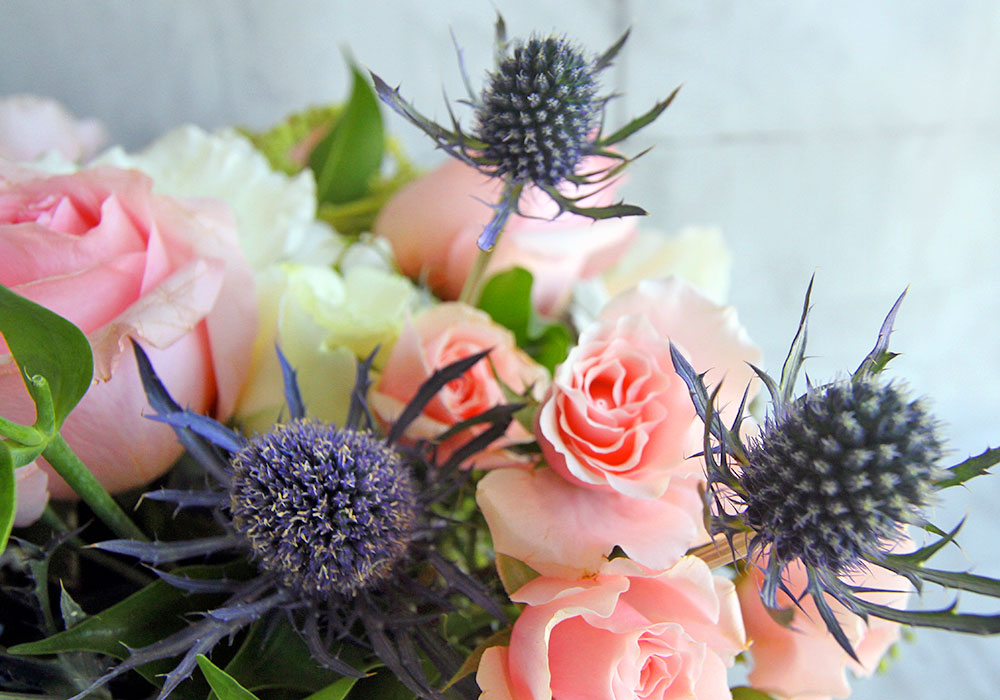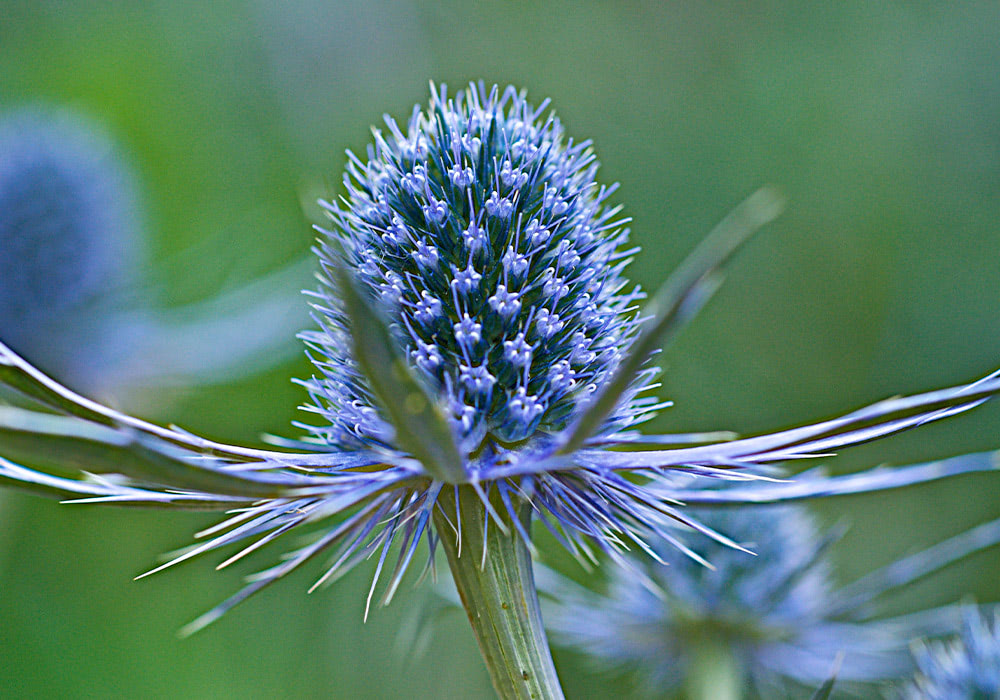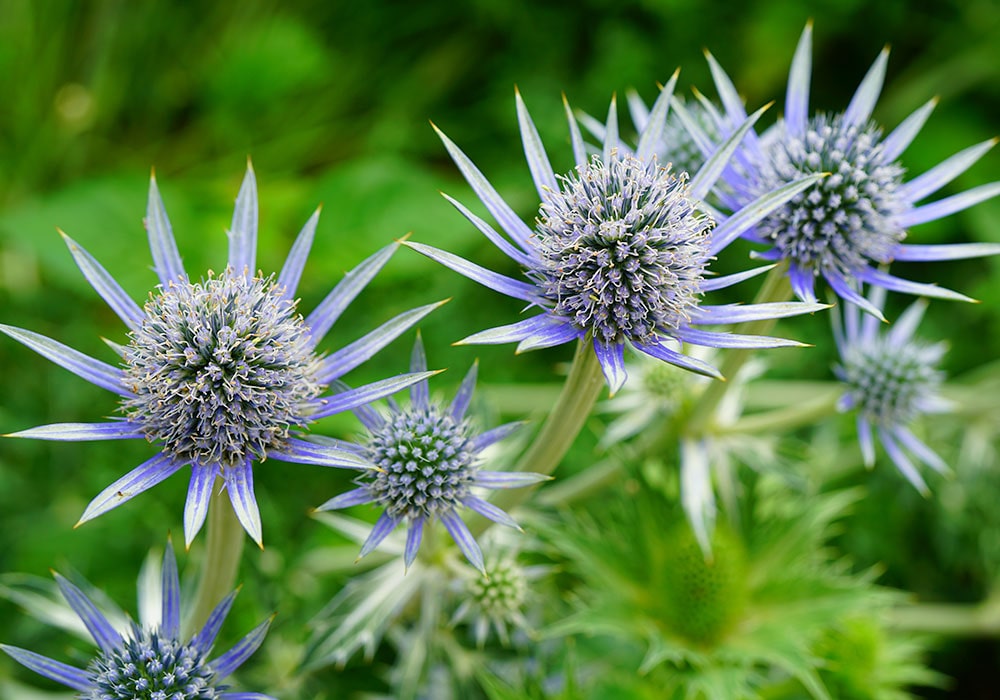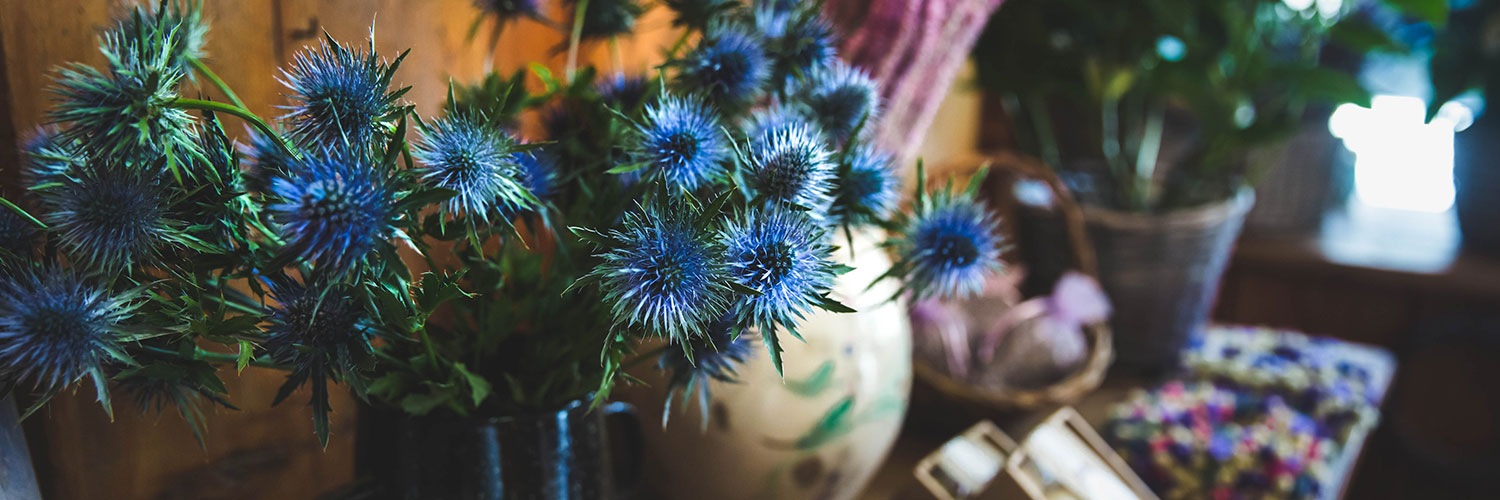
Blue Thistle is a unique accent stem that adds beautiful texture, unique interest, and rugged charm to flower designs. Its blue-toned spiky flower is exceptionally versatile and incorporates a little zest among delicate petals and fresh greenery, like a leather jacket paired with a sundress.
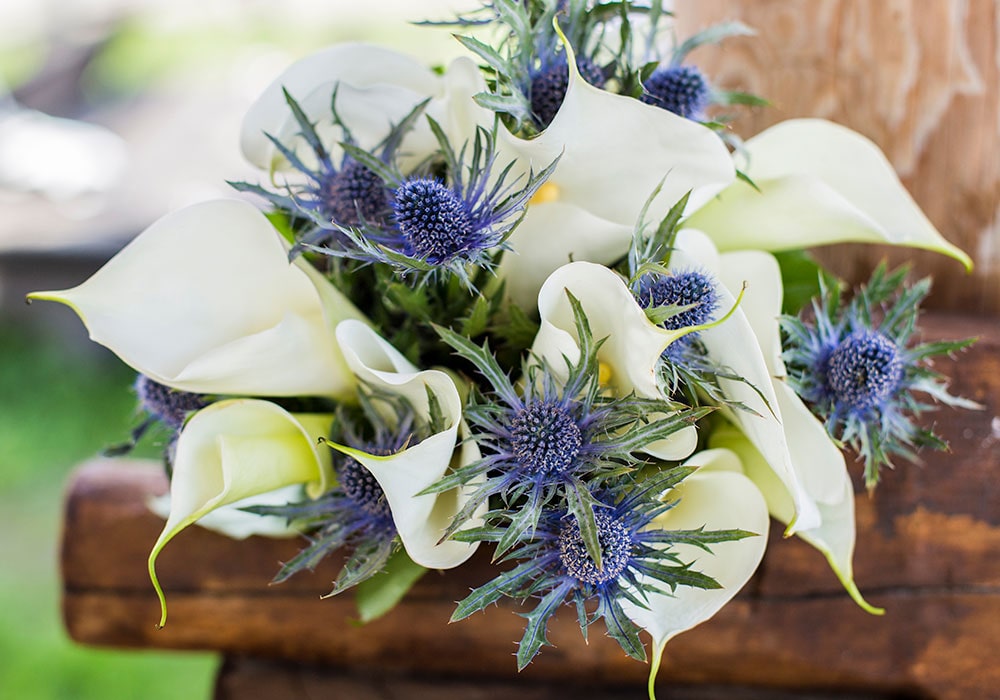
About Blue Thistle
Blue Thistle belongs to the Apiaceae family and is scientifically known as Eryngium Planum. While "blue thistle" is perhaps its most popular name, additional common names for this stem include blue devil, blueweed, sea holly, sea star, and star thistle. Blue Thistle is native to Eastern Europe and was brought to the United States many decades ago, where it now grows wild in many states, especially those with temperate climates. Since blue is an unusual color to find naturally in flowers, blue thistle is the perfect way to incorporate these fresh and peaceful hues in bouquets and arrangements.
Characteristics of Blue Thistle
Blue Thistle has round, spiky blooms with prickly leaves and a cone-shaped center. The stem tends to be pretty hardy and offers no fragrance. Some blue thistles are bright blue or even lean towards purple, while others may have a silver or green tint. These rustic, thorny-looking stems can grow between 24 and 36 inches and bloom from July through September. Unlike the invasive Scottish Thistle, one can distinguish blue thistle based on its softer and more geometric appearance.
Popular Blue Thistle Varieties
Blue Thistle Name Meaning
The popular name "blue thistle" speaks to the stem's iconic and distinctive blue hue, while its scientific name (Eryngium planum) is Greek for "flat thistle."
Popular Blue Thistle Symbolism
This hardy, coarse, wild stem symbolizes valor, courage, bravery, resilience, determination, protection, and loyalty.
Based on its symbolism and color, blue thistle is a great stem to include in holiday bouquets and table centerpieces, especially on occasions like the winter solstice or Independence Day. It's also a great way to express your admiration for a loved one's perseverance and strength, from "get-well" arrangements to "congratulations" bouquets.
Fun Facts About Blue Thistle
- Bees and butterflies love the nectar produced in blue thistle and tend to flock to these wild stems.
- Blue Thistle is considered an herbaceous perennial weed, but this doesn't detract from its quirky charm and beauty.
- Anise, fennel, and Queen Anne's lace are relatives of blue thistle.
- Blue Thistle grows best on mountainsides, around coastal areas, and in grasslands.
- Thanks to its striking appearance, Blue Thistle is perfect for boutonnieres and other wearable floral designs.
- Blue Thistle is generally nontoxic to cats and dogs.
Blue Thistle Occasions
Blue thistle is a popular accent stem for all kinds of wedding bouquets, boutonnieres, corsages, and flower crowns. Its texture and wild, rustic beauty fit seamlessly into various wedding styles, not limited to boho, country-western, vintage, and whimsical garden. Blue Thistle pairs exceptionally well with white and pale pink flowers, including anemones, ranunculus, roses, snapdragons, and dahlias.
